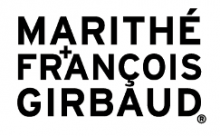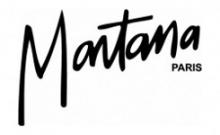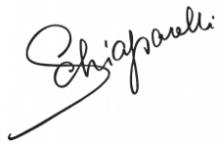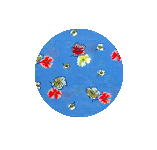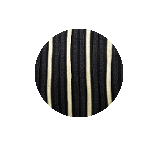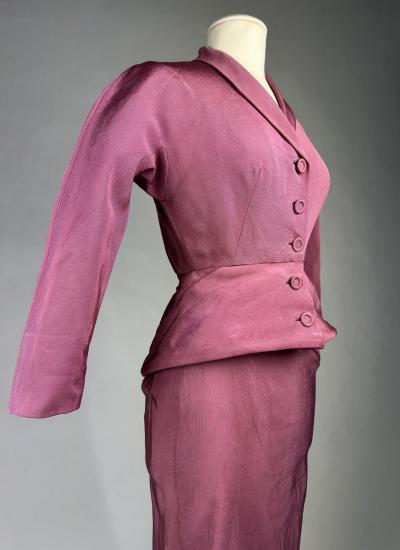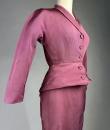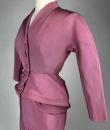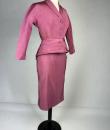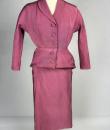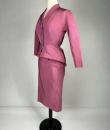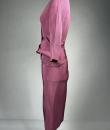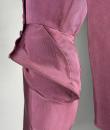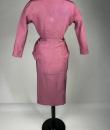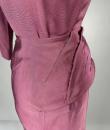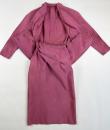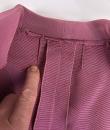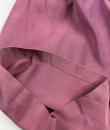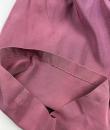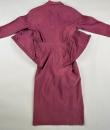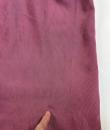Skirt suit in lilac silk ottoman modeled after Jacques Griffe - Paris Circa 1951
Circa 1951
France
A tailor-effect dress in lilac pink silk ottoman after the famous couturier Jacques Griffe, dating from the early 1950s. A clever cut inspired by Christian Dior's Bar suit, with an integrated skirt and fitted jacket whose basquesses are emphasised by a metal-framed beading that creates a backward-tilt effect. Fitted top, small shawl collar, kimono-cut sleeves, fastened at the front with five matching buttons. Sheath skirt with pleated work on the bias, emphasising the hips. The skirt has no lining or inner claw and is fastened at the waist with press studs. This is a Couture or demi-couture model, possibly based on a pattern by Jacques Griffe (a trace of a claw has been removed from the collar on the inside). This false tipped suit, which was black for the 1951 fashion show, made Jacques Griffe world-famous following its publication in Life Magazine (photo on request). All the sewing was done by hand. Please note a few tiny whitish halos on the pink silk ottoman. No holes or stains. Good condition.
Dimensions: Equivalent to size 36 in France. Total height 110 cm, front jacket height 53 cm, shoulders 38 cm, waist 66 cm, chest 88 cm, sleeves 52 cm, hips 87 cm.
Publication reference in Life: A black cocktail dress featuring a deep V neck, which almost went to the waist, by designer Jacques Griffe, Paris 1951.
Jacques Griffe (1909-1996) was a French fashion designer and couturier, as well as a costume designer for theatre and film. From 1935 to 1939, Jacques Griffe worked in Paris alongside Madeleine Vionnet, whose designs with their famous drapery fascinated him. In 1941, he opened his own haute couture salon in Place Gaillon. During the Second World War, he was mobilised and taken prisoner. In 1947, he moved to rue du Faubourg-Saint-Honoré and founded his ready-to-wear house Jacques Griffe Évolution. In 1951, the retiring British fashion designer Edward Molyneux put him in charge of his couture house on Rue Royale, opposite Maxim's. In 1973, he put an end to his professional activities and retired to Cély-en-Bière, in Madeleine Vionnet's house, which he had acquired. Considered a master of draping and colour, he loved powerful colours and fabrics that highlighted them, such as moire and lamé.


























